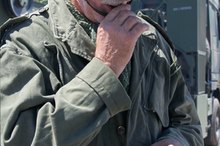The Purpose of a Juvenile Detention Center
Juvenile detention centers house kids up to age 18 who have committed offenses ranging from habitually running away to assault. Adolescents are sent there by juvenile judges, rather than adult courts. Although they are restrictive facilities, their purpose is not necessarily punitive. Rather, their focus is intervention and rehabilitation.
Function
Juvenile detention centers are secure facilities. While there, juveniles pose no harm to society. Opportunities to harm themselves or fellow juvenile residents are limited. These centers may house anywhere from 10 to more than 100 juveniles at any one time. Their architectural design can range from campus-like with little resemblance to a correctional facility to prison-like.
- Juvenile detention centers are secure facilities.
- Opportunities to harm themselves or fellow juvenile residents are limited.
Staff
Behavioral Modification Summer Camps for Teens in Texas
Learn More
Juvenile detention staff members are charged with assisting adolescents with their educational needs, as well as helping them make positive changes in their lives. The juvenile detention center in Franklin County, Ohio, has seven full-time teachers who provide instruction in math, science, social studies, English and special education. In addition to the educators, the center has a superintendent, a manager, corrections officers, councilors and tutors. The purpose of these individuals is to ensure that the needs of the residents are met.
- Juvenile detention staff members are charged with assisting adolescents with their educational needs, as well as helping them make positive changes in their lives.
Programs and Remediation
Another purpose of a juvenile detention center is to provide programs and remediation for the youths who are detained. Programs such as as individual and group counseling and optional religious services are offered. Girl Scouts, victim's awareness, family responsibilities, career planning and work programs are among the activities offered at the juvenile detention center in Guadalupe Parkway, San Jose, California.
- Another purpose of a juvenile detention center is to provide programs and remediation for the youths who are detained.
- Girl Scouts, victim's awareness, family responsibilities, career planning and work programs are among the activities offered at the juvenile detention center in Guadalupe Parkway, San Jose, California.
Benefits
How Can Teens Help in Their Community?
Learn More
Juvenile detention centers can help adolescents, even those who are repeat offenders, turn their lives around before they commit crimes as adults and wind up in prison. Well-run juvenile detention centers help adolescents develop insight, change their behavior and develop goals for themselves that they can pursue when they are released. The best-run centers have employees who can serve as role models, showing teens that they have choices in their lives.
Prevention/Solution
The overall goal of a juvenile detention center is to educate and provide a safe space where teenagers can take a timeout to understand their behavior and make a positive changes for the rest of their lives.
Related Articles
References
- U.S. Customs and Border Protection. Southwest Border Migration FY 2020.
- The United States Department of Justice. Attorney General Sessions Delivers Remarks Discussing the Immigration Enforcement Actions of the Trump Administration.
- AP News. Immigrant children describe treatment in detention centers.
- von Werthern M, Robjant K, Chui Z, et al. The impact of immigration detention on mental health: a systematic review. BMC Psychiatry. 2018;18(1):382.
- Mares S. The Mental Health of Children and Parents Detained on Christmas Island: Secondary Analysis of an Australian Human Rights Commission Data Set. Health Hum Rights. 2016;18(2):219-232.
- MacLean SA, Agyeman PO, Walther J, Singer EK, Baranowski KA, Katz CL. Mental health of children held at a United States immigration detention center. Soc Sci Med. 2019;230:303-308. doi:10.1016/j.socscimed.2019.04.013
- Zwi K, Mares S. Stories from unaccompanied children in immigration detention: A composite account. J Paediatr Child Health. 2015;51(7):658-662.
- Kronick R, Rousseau C, Cleveland J. Asylum-seeking children's experiences of detention in Canada: A qualitative study. Am J Orthopsychiatry. 2015;85(3):287-294. doi:10.1037/ort0000061
- Lorek A, Ehntholt K, Nesbitt A, Wey E, Githinji C, Rossor E, Wickramasinghe R. The mental and physical health difficulties of children held within a British immigration detention center: a pilot study. Child Abuse Negl. 2009 Sep;33(9):573-85. doi: 10.1016/j.chiabu.2008.10.005. Epub 2009 Oct 6. PMID: 19811830.
- Stracqualursi V, Sands G, Elkin E and Rocha V. What is the Flores settlement that the Trump administration has moved to end?. CNN Politics. Updated August 23, 2019.
- Linton JM, Griffin M, Shapiro AJ; Council On Community Pediatrics. Detention of Immigrant Children. Pediatrics. 2017;139(5):e20170483.
- Brabeck KM, Lykes MB, Hunter C. The psychosocial impact of detention and deportation on U.S. migrant children and families. Am J Orthopsychiatry. 2014;84(5):496-505.
- Chapin A. Detaining Migrant Children Has Lifelong Psychological Effects, Experts Say. Huffington Post. Published June 14, 2018.
- Ducharme J. Separating Kids From Parents Can Cause Psychological Harm. But Experts Say Detaining Them Together Isn't Much Better. Time. Published June 21, 2018.
Writer Bio
Jennifer Smith has been writing professionally since 2000. She has written and published several articles on various websites including FITDAY and HealthNews and worked with start-up companies to establish content for their websites. Smith has a Bachelor of Arts in liberal studies with concentrations in English and creative writing from Bowling Green State University.









